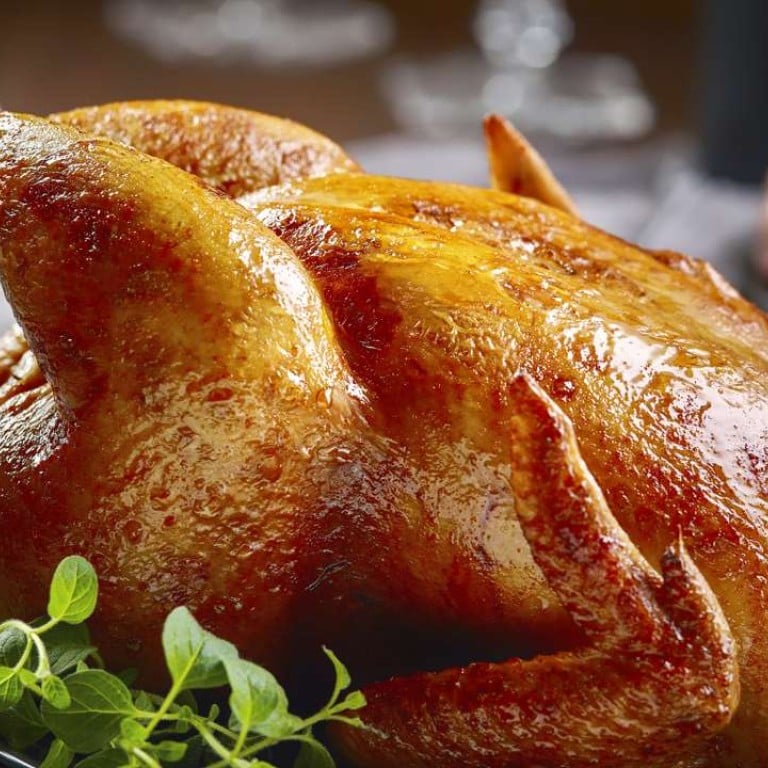
Can eating chicken tails cause cancer or other diseases?
Many of us are partial to the parson’s nose from a roast chicken or on a skewer, but there are a number of myths surrounding the juicy back end of the bird
Question: Does eating chicken tail give you cancer or other diseases?
The straight answer: no – but be aware that this titbit is high in fat so should be eaten in moderation.
The facts: Tail, butt, haunch, the parson’s nose – whatever the name given to a chicken’s rear end, it’s a popular snack skewered and grilled in many parts of Asia. Fans like it because it’s juicy and has a relatively strong flavour for an often bland bird. However, it’s also a part that gets a bad rap as a supposed carcinogen or for apparently containing viruses, bacteria or hormones that can have a negative effect on human health.
Fion Chow, a registered dietitian with the Hong Kong Cancer Fund says: “There is no research showing a link with cancer.” The idea that chicken tail is bad because it is part of the animal’s waste elimination system is almost a form of sympathetic magic – just like thinking that eating brains will make you brainier. The part contains no carcinogens or toxins.

The snack is often barbecued or grilled, a cooking process known for forming carcinogens, especially in the fat under the skin. However, this is true for all proteins, so Chow recommends limiting their intake and not eating any burnt part of barbecued meats.
The nutritionist says no research has been done to say how much chicken tail consumption is fine but says moderation is best for anyone trying to lose weight or maintain a healthy weight.
The tail’s detractors also point to the organ as a “large warehouse store of viruses and bacteria”, as one blogger puts it. The organ contains the bursa of Fabricius, a gland that generates the chicken’s disease-fighting antibodies – white blood cells called macrophages that swallow bacteria and viruses. There is a concern that these are not broken down and remain in the gland, only to be eaten by the unwary. Chow believes this is just a misunderstanding of chicken biology.
Chow says that when macrophages engulf viruses or bacteria they dissolve them so there is no toxin or carcinogen left. Even if there were any damaging substances left they would spread through the whole chicken because the bursa of Fabricius is part of the lymphatic system.
There is also a belief that eating chickens can lead to high levels of oestrogen because the hormone becomes concentrated in the chicken’s tail. An oestrogen imbalance in women can cause an increased risk of cancers such as breast and endometrial, disrupt the menstrual cycle, and cause tumours and cysts.

“This doesn’t have many consequences,” says Chow. “Most oestrogen in women is produced by fat cells in our bodies or by the ovaries, up to menopause and then by fat cells.”
In men oestrogen dominance imbalance can cause a host of health issues ranging from erectile dysfunction to larger man boobs and increased risk of prostate cancer.
“Oestrogen in skinless chicken is minimal and won’t be significant for either gender. Oestrogen imbalance in men is not caused by oestrogen in chicken,” says Chow. The issues are more likely to be related to obesity, which leads to increased levels of hormones with sometimes serious consequences. As the charity Cancer Research UK says on its website: “Fat cells in the body are active and produce hormones and proteins that are released into the bloodstream and carried around the body. Because they are spread through the circulation, these ‘chemical messengers’ can affect many parts of the body, and increase the risk of several different types of cancer.”
Overall, eating chicken tail as part of a varied diet containing many different kinds of food will have no health consequences.
For more information or support: cancer-fund.org

